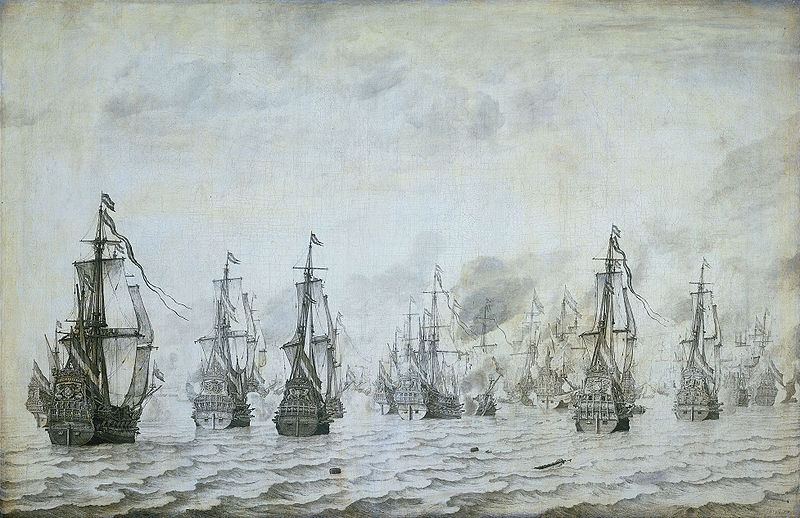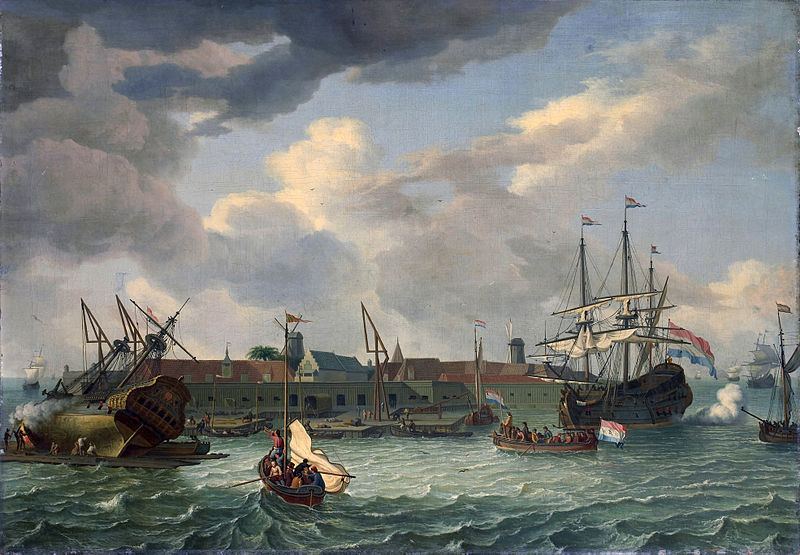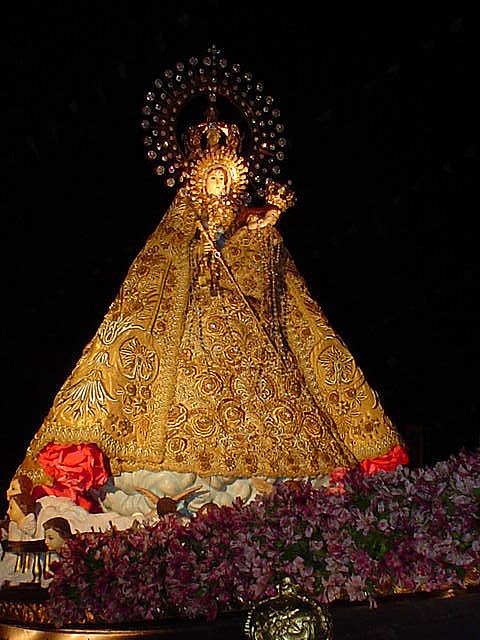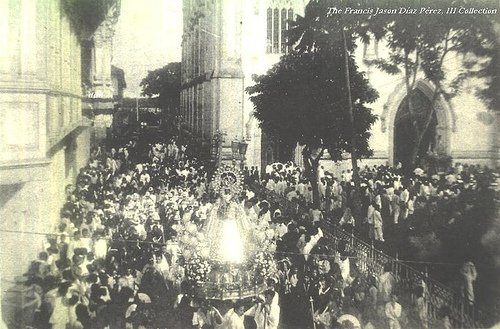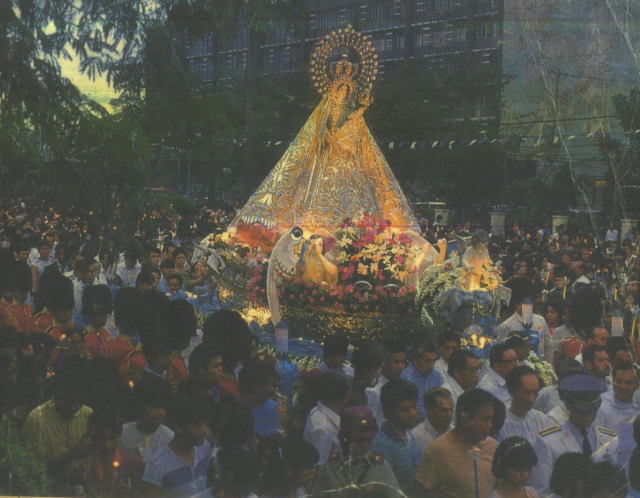(2nd in a 2-part series)
(Please click here to read Part 1)
THE FIVE BATTLES
First Battle
Upon reaching Mariveles, the Spanish found no trace of the Dutch. Continuing on to Bolinao in Lingayen Gulf, they finally caught sight of one enemy ship in mid-morning of March 15, 1646. At 1:00 pm, after a hot pursuit of the lone vessel, the two sides finally came within firing range of each other. The two Spanish vessels, mockingly called “two wet chickens” by the Dutch (a play of word on galeones and gallinas), confronted 4 Dutch ships and one small oar-propelled boat. After the initial exchange of salvoes, a fierce and fiery clash ensued which lasted for five hours. When the smoke cleared and the din of battle died down at 7 p.m. the enemy ships were on the retreat with the Dutch altamiranta hobbling and in danger of sinking. By a stroke of luck, the enemy slipped under the cloak of darkness and disappeared. The Filipino-Spanish forces gave chase till Cape Bojeador on the northern tip of Luzon but to no avail. With only minor damages sustained, a few wounded and no fatalities, it was no doubt a clear victory for the Catholic Spanish and native forces. The Dutch, on the other hand, suffered many casualties and two severely battered ships foundered.
After undergoing repairs in the port of Bolinao, the two Spanish ships sailed to San Bernadino Strait near the southernmost tip of Luzon upon instructions of the Governor-General. Their mission: to escort, protect and conduct safely to port the San Luis, a commercial galleon expected to pass through the strait from Mexico on or around July 21, 1646.
Interlude
The two “wet chickens” reached the port of Ticao Island (a long strip of land between San Bernadino Strait [Embocadero de San Bernadino] and Ticao Passage, north of Masbate) in early June of 1646. There they set anchor to monitor the arrival of the San Luis and to defend it against marauding enemy ships.
Meanwhile, a second Dutch fleet that reached Philippine waters in April had been conducting raids in Jolo Island and Zamboanga on the island of Mindanao only to find out that the Spanish had already decamped due to the peace treaty signed with the Muslims just after the first battle.
Upon receipt of orders from the Dutch headquarters in Batavia, the Dutch squadron of seven ships sailed for the Embocadero with the obvious intent of intercepting galleons arriving from Mexico. The fleet reached the area on June 22 and on the following day discovered the Encarnacíon and Rosario anchored in the port of San Jacinto which is located in a cove with a narrow entrance and exit point. The two vessels were trapped as the Dutch blocked the bottleneck passage to the harbor to form a naval blockade. To save on ammunition and powder, a war council decided to hold back and go on the offensive only when the San Luis arrived. Thus, no major clashes occurred save for some minor skirmishes where the Dutch sent intermittent launches[7] to harass the two galleons. After 31 days of standoff, the Dutch grew impatient and lifted the blockade. Thinking that the San Luis[8] had slipped by them, the fleet headed towards the direction of Manila.
Second Battle
At the crack of dawn of July 25, the Encarnacíon and Rosario finally left the port of Ticao to confront the enemy fleet in the Embocadero. Finding the Dutch nowhere in sight, they immediately gave chase knowing that Manila lay defenseless. Finally on July 28, they caught up with the seven Dutch ships but no immediate clash ensued. Apparently, the Dutch avoided engagement in broad daylight.
True enough, on a bright moonlit evening of July 29 at seven o’clock , between the islands of Banton and Marinduque amidst calm waters, the Dutch finally approached for the kill. An intense and fiery battle commenced with fierce exchanges of cannonball and musketry fire between the adversaries. The enemy ships ganged up on the Encarnacíon but were repulsed by its intense artillery fire. The Dutch employed fireships filled with incendiary devices to no avail. They were quickly neutralized and one sent to the bottom of the sea. The battle lasted until daybreak and yet again, the Dutch found themselves on the retreat having sustained considerable damage and losses. On the run throughout the day, the Dutch refused to engage even as the Spanish commander urged them to do battle.
The flagship Encarnacíon, had no fatalities with only two wounded while the altamiranta Rosario, lost five men. The second clash would prove to be the bloodiest among the sea battles.
Third battle
On the next day, July 31, the feast of St. Ignatuius of Loyola, the Spanish fleet kept on the pressure on the Dutch squadron which was now reduced to six vessels and a fireship. With much persistence, the two “wet chickens” cornered the Dutch who were left with no option but to fight as they reached the waters between the islands of Mindoro and Maestre de Campo at around 2:00 p.m.
The Spanish-Filipino forces pressed on the attack sensing that their adversary was on the defensive. Since it was daytime, the odds tilted in favor of the local forces. Soon, another fierce and thunderous exchange of fire commenced. To the pleasant surprise of the Spanish-Filipino crew, their cannons and muskets worked with smooth and uncanny precision. One cannoneer attested that he fired 19 cannon shots in succession without fail, rosary on one hand and a torch on the other, while proclaiming loudly, “Viva La Virgen!”
In the heat of battle, the Dutch flagship directed its fire on the altamiranta only to be met a by a barrage of cannon balls in response. The enemy flagship suffered considerable damage that it had to withdraw quickly to avoid being sunk.
In desperation, the Dutch launched their remaining fireship hoping its load of fireworks would do major damage to the other side. Devoid of sails, it had to be escorted and dragged by launches only to end up a veritable sitting duck to furious cannonball fire. As it went down to the bottom of the sea, the Encarnacíon’s crew shouted in jubilation, “Ave Maria!” and“Viva la Fe Cristo y la Virgen Santisima del Rosario!”
The naval clash raged for the rest of the day until 6 p.m. when the routed Dutch retired and fled under cover of darkness fortuitously aided by a thunderstorm.
Having realized their miraculous victory, the officers and crew publicly declared that it was granted through the intercession and patronage of Our Lady of the Most Holy Rosary. General Orella “fell on his knees before an image of Our Lady of the Rosary and publicly gave thanks for the victory, acknowledging it as by Her hand.”
In early August, it was learned that the Dutch fleet disappeared, with two fireships sunk and the flagship badly battered. Thinking that the Dutch had enough, the Governor-General recalled the fleet to the port of Cavite for repairs and recovery.
On their return to Manila, the officers and crew were received with much acclaim by the overjoyed populace. In fulfillment of their vows, they walked barefoot, with the four Dominican chaplains, people and religious of Manila in tow, to offer gratitude and homage to Our Lady of the Most Holy Rosary in Santo Domingo Church. Little did they know that from this humble beginning would blossom a beautiful tradition of yearly processions to commemorate Our Lady’s intervention. For his valiant efforts, General Lorenzo Orella took a reward of the best encomiendas[9] in the land while the rest of the officers received a promotion in rank.
The threat renewed
By September, 1646, confident that they had stemmed the Dutch invasion, Manila authorities dispatched the newly built merchant galleon San Diego without escort at least until it reached San Bernadino Strait on its way to Mexico. Much to the surprise of its commander and crew, three Dutch ships appeared on the horizon near Fortune Island where its namesake under Antonio de Morga sunk in 1600. The enemy vessels were part of a fleet of 6 ships hoping to join the two previous Dutch flotillas which unbeknownst to them had already been soundly beaten by the local forces.
The Dutch squadron seized the opportunity to attack upon seeing the commercial ship alone and unguarded. The San Diego’s commander, General Cristobal Marquez de Valenzuela acted quickly by having five cannons brought on deck. Fortunately, they were enough to help thwart the surprise attack but not without sustaining some casualties. The ship then retired to Mariveles for safety.
When Governor-General Fajardo Chacón received news of the skirmish, he immediately reorganized the Spanish armada by adding the now armed San Diego to the fleet. Don Sebastian Lopez, the second in command in the previous three battles, took over the helm of the flagship Encarnacíon now that General de Orella had retired from service. Don Agustin de Cepeda, the former sergeant-at-arms, ascended to the admiralship of the altamiranta Rosario. A galley of 100 sailors with an escort of 4 brigantines reinforced the fleet.
The same spiritual preparations and solemn vows were made as with the previous campaign. Two Dominicans retained their chaplaincy of the flagship while two Franciscans now tended to the altamiranta. An Augustinian priest took charge of the extra galley.
Fourth Battle
By September 15, the armada was ready, willing and able to set sail to meet the Dutch challenge once again. The search for the enemy in the vicinity of Fortune Island proved unsuccessful. With patience and perseverance they finally caught sight of the adversary’s flotilla off the coast of Mindoro Island near Calavite point. At 4:00 p.m., while struggling against the wind, the Spanish flagship nevertheless opened fire to signal its challenge. Unable to close the gap, both sides fought for five hours at a distance using long range artillery.
At around 9:00 p.m., the Rosario, inadvertently it seemed, drifted into enemy territory and was surrounded by the Dutch ships. There was nothing the Spanish flagship could do to come to the aid of the altamiranta under cover of darkness. As expected, a fiery and intense exchange ensued which lasted a good four hours. At one point, the guns of the altamiranta fell silent, which emboldened the Dutch ships to draw near for the kill. Little did they know that it was just a ruse. As soon as the Dutch vessels came within firing range, the altamiranta, on orders of Admiral Cepeda, set their cannons ablaze causing considerable damage to the enemy which hastily retreated.
At daybreak, the Spanish flagship’s crew could now see the altamiranta and finally came to its rescue. But by then, the enemy had already taken flight after receiving another terrible beating.
The Fifth Battle
The San Diego was beset by structural defects that needed correction thus its journey to Mexico had to be aborted by a council convoked by General Lopez. It laid anchor at Mariveles under the watch of the “two wet chickens.” Unfortunately, the Rosario drifted away due to strong currents which it could not overcome thus separating it from the rest of the Spanish fleet.
Meanwhile the three Dutch ships, which according to records were huge and armed to the teeth, reemerged on October 4, 1646, the feast of St. Francis, apparently sensing their adversary’s predicament. Thinking they had the upper hand, the Dutch decided to press the attack and approach the Spanish flagship.
The Encarnacíon’s commander chose to bide his time and wait for the enemy to come nearer since it would be too much of a gamble to leave the San Diego alone. At a given moment, the flagship’s sails unfurled and unleashed its cannons on the approaching enemy ships. Thus began another tumultuous and relentless clash of firepower that lasted four hours. Like the Rosario in the previous battle, the Encarnacíon bucked all odds as it engaged the three Dutch warships singlehandedly while inflicting heavy casualties on the enemy which withdrew to a quick retreat.
Much to the chagrin of the fleeing Dutch, the wind died out and their progress stalled. Admiral Francisco de Esteyvar seizing the window of opportunity ably launched a daring attack from his oar-driven galley which was now being propelled under the cadence of the Hail Mary. With just a single cannon on the prow and some culverins, he picked on the nearest Dutch ship which suffered so much damage it almost sunk. Some enemy crew jumped ship in panic but luckily the wind returned which saved the day for them as the ships disappeared into the night even as the Encarnacíon and galley followed in hot pursuit.
At battle’s end, the intact Spanish galley sustained no casualty. However, the flagship suffered four fatalities but with minimal damage. Once again, the Spanish-Filipino forces gained another tremendous victory.
A TRADITION BEGINS AND FLOURISHES
Upon their triumphant return to Manila, the officers and crew fulfilled once more their solemn vow and promise of walking barefoot to the shrine of Our Lady of the Most Holy Rosary in Santo Domingo Church.
On January 20, 1647, a solemn procession, Mass, and a parade of the Spanish squadron celebrated the decisive victory. Soon thereafter, the City of Manila convened a council which pledged to solemnly commemorate the naval victories annually.
And to this day, the Feast of Our Lady of the Most Holy Rosary of La Naval de Manila is celebrated yearly with much pomp and ceremony on the second Sunday of October. It is a fitting tribute to Our Lady as the Patroness of Christian navies, a patronage which traces its roots to the resounding triumph of the Catholic forces against the Ottoman Turks in the Battle of Lepanto in 1571 where Pope St. Pius V, also a Dominican, entrusted the Catholic fleet to the protection of Our Lady of the Rosary. In thanksgiving, the holy pontiff, added the Feast of the Holy Rosary to the Church calendar and the invocation Auxilium Christianorum to the litany of Our Lady, in humble yet fitting acknowledgment of her powerful intercession.
NOTHING BUT MIRACULOUS
Noting the extraordinary circumstances that led to the victory, the Archdiocese of Manila conducted an ecclesiastical inquiry at the behest of the Procurator General of the Dominican fathers, Father Friar Diego Rodrigues, O.P.
The most striking occurrences scrutinized were as follows:
- The Spanish-Filipino forces lost only 15 crew members;
- The fleet comprised mainly of two aging, rundown merchant galleons;
- The troops prayed the Rosary faithfully to ask for the Holy Virgin to intercede and to grant them the victory.
After a thorough examination of witnesses and pertinent events “the Venerable Dean and Chapter of the Archdiocese of Manila declared as miraculous the victories obtained by the defenders of religion in the Philippines against the Dutch, in the year 1646.”
On April, 9, 1652, the official declaration states:
“That we should declare and we do declare that the five battles expressed in the testimonies, which the said two galleons, under Catholic arms, won against the Dutch enemies, were and should be upheld as miraculous, and that they have been granted by the Sovereign Majesty of God by means of and through the intercession of the Most Holy Virgin Our Lady and Her devotion, the Holy Rosary.”
Author’s notes:
This article was pieced together mainly from two sources:
- Cortes, Regino, O.P., Ph.L., S.Th.L., S.S.L. The Story of La Naval. Quezon City: 537 Quezon Avenue, Santo Domingo Convent.
- “Battles of La Naval.” Wikepedia, The Free Encyclopedia. Wikimedia Foundation, Inc.. 2 September 2012. Web. 5 September 2012. http://en.wikipedia.org/wiki/Battles_of_La_Naval_de_Manila
Other references:
- Crossley, John Newsome. Hernando de los Ríos Coronel and the Spanish Philippines in the Golden Age. Burlington, VT: Ashgate Publishing Company, 1988. Google Books. Web. 1 September 2012.
- Jernegan, Prescott Ford. A Short History of the Philippines: For use in Philippine Schools. New York: D. Appleton and Company, 1905. Google Books. Web. 30 August 2012.
- Ocampo, Ambeth. “The Christmas Eve uprising of 1639.” Philippine Daily Inquirer. 12 December 2008. Web. 2 September 2012.
- Lach, Donal F., Van Cley, Edwin J. Asia in the Making of Europe, Volume III: A Century of Advance. Chicago: The University of Chicago Press, 1993. Google Books. Web. 29 August 2012.
- “Dutch East Indies.” Wikepedia, The Free Encyclopedia. Wikimedia Foundation, Inc.. 5 September 2012. Web. 6 September 2012.
- 12.“Eighty Years’ War.” Wikepedia, The Free Encyclopedia. Wikimedia Foundation, Inc.. 27 August 2012. Web. 27 August 2012.
- 13. Photo credit: La Naval Procession
www.flickr.com/photos/francisjasondiazperez/3986743490
(Please click here to read Part 1)
